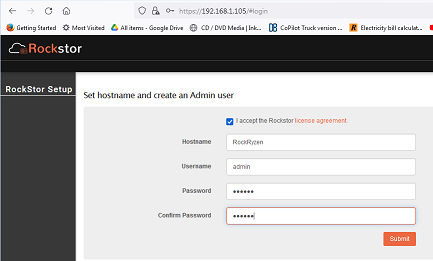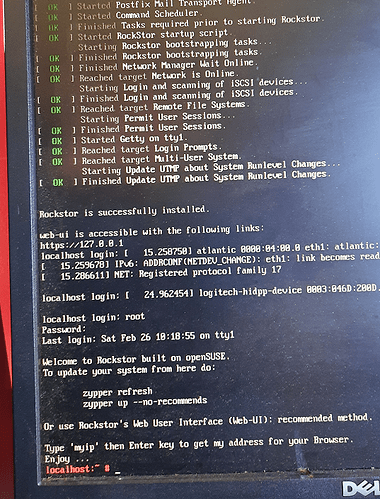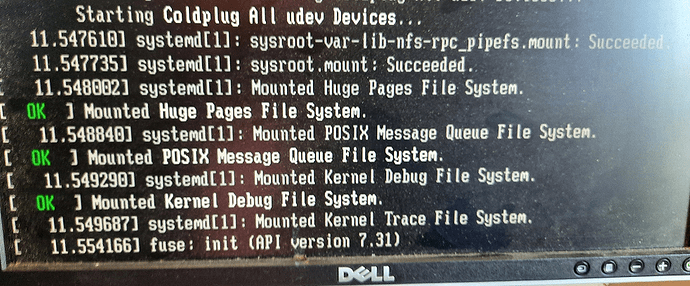Howdy again. Tried 5950x setup and ONE (funny,different,weird?) thing happened.
The Ryzen 9 5950X on Gigabyte Aorus X570 mobo has 2x 1TB NVME drives and a 480GB blank SSD installed with a TpLink 10GB NIC and a cheapo Nvidia GT 610 video card to test with. Probably this is the last bench test for these parts as they are going into a new water cooled WS.
I’ve run into many problems over the last few months, mostly due to my own ignorance and “need for speed” complex. LOL!
My latest fool (me) proof method of installing Rockstor is as follows and now works every time on dedicated hardware.
I took a USB stick that has the latest (a week ago?) Rockstor install and did the following:
-
With Ryzen 9 5950X setup OFF, installed the USB stick, attached a monitor & usb kybd then started up the system.
-
Hit “Del” key to get into setup. Went to Advanced mode and reset all bios setting to “Optimal Defaults”, saved and exited.
-
Hit “Del” key again to get into bios, went advanced “Boot” options and selected option 1 as “SanDisk” (Sandisk is the USB stick). ALL other options disabled. DO NOT SELECT “UEFI SanDisk” if offered first! Select only the USB stick by itself and disable all others.
-
Saved and exited and let the USB stick boot up, selected Install Rockstor etc. and go through all the prompts.
Weird thing during install:
The screen that I normally see go from VGA to Higher Res stayed in VGA mode. Keep in mind I used the same card on two other Intel Mobo’s that worked fine. Usually just after starting install, the screen resolution changed to high res… but not on the Ryzen 9 setup!
-
Pushed power button to shut down, removed USB stick, restarted system. System seemed to boot fine. However, this time it booted High Res!
-
I login as “root” with my password and there is all the Rockstor stuff I am used to seeing.
- Went to old WS, entered the port in Firefox and followed the login stuff for a new setup.

- Clicked on the blinking “Update” thingy and did all the updates.
From that point on, everything seemed normal, disks showed up, DASHBOARD works, network works, all copacetic.
Hope that helps someone somewhere…

UPDATE:
Further testing, I tried the same setup with a GTX 980 instead and encountered no problems.
I tried again with an AMD HD7970 card and the system install hangs:
Same setup with AMD HD7970 runs fine in windows (tested last).
Tested with GTX 980 and HD7970 because they run PCIe x16 instead of x8 like the GT 610 does.
UPDATE2:
2/27/22
Further testing, I tried the install on a GA-78LMT-USB3 Mobo that has the 760G chipset with built-in HD3000 graphics using 1045T CPU. I got the same garbled display mess.
I then installed the GT610 video card and all went well. After the install and updates, I shut it down, removed USB drive and rebooted and all was well.
I then removed the GT610 and rebooted and the screen stopped displaying after the Fuse thing. BUT, the WebUI worked fine!
Go figure, the AMD 760G chipset doesn’t seem supported, yet this board runs LinuxMint and Windows just fine. Maybe I should try a generic openSUSE Leap install.
Final Update 2/27/22:
openSUSE 15.3-2 installs with KDE GUI and runs fine.
Time to start on my new workstation…






